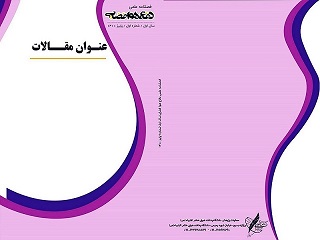نوع مقاله : مقاله پژوهشی
نویسندگان
1 دانشکده مهندسی برق، دانشگاه پدافند هوایی خاتم الانبیاء(ص)، تهران، ایران
2 استادیار برق، دانشکده مهندسی برق، دانشگاه پدافند هوایی خاتمالانبیاء(ص)، تهران، ایران
چکیده
در این مقاله بهبود تفکیکپذیری SAR با استفاده از یک فیلتر منطبق بر پایه FrFT مورد بررسی قرار گرفته است که فیلتر منطبق بر شیب نامیده شده است. معمولاً سیگنال دریافتی از اهداف توسط SAR با استفاده از الگوریتمهائی همچون RDA و CSA مورد پردازش قرار گرفته و تصویر نهائی استخراج میشود. یکی از مهمترین بخشهای این الگوریتمها، پیادهسازی یک فیلتر منطبق است که موجب فشردهسازی سیگنال دریافتی در راستای برد و در راستای سمت شده و منجر به مکانیابی و تفکیکپذیری بالای SAR خواهد شد. با توجه به اینکه شکل موج ارسالی اغلب رادارهای SAR از نوع LFM میباشد، بنابراین اکوی برگشتی از اهداف در راستای برد یک سیگنال LFM میباشد. از طرفی در رادار SAR، در راستای سمت همیشه یک سیگنال چیرپ ایجاد میشود. در نتیجه در این مقاله فشردهسازی سیگنال با استفاده از فیلتر منطبق بر شیب بطور خاص روی سیگنال سمت انجام شده است و بدیهی است میتوان همین روش را روی سیگنال LFM در راستای برد نیز تعمیم داد. نتایج بدست آمده نشان میدهند که روش پیشنهادی مبتنی بر تبدیل FrFT در حوزۀ زمان - فرکانس برای پیادهسازی یک فیلتر منطبق نسبت به روش کلاسیک، هم تفکیکپذیری را بهبود داده و هم سطح گلبرگهای فرعی در آشکارسازی دو هدف نقطهای کاهش داده است.
کلیدواژهها
موضوعات
عنوان مقاله [English]
An improved synthetic aperture radar cross-range resolution method based on Matched Slope Filter
نویسندگان [English]
- Farhad Sadeghi 1
- majid zarie 2
1 - Electrical Engineering Department, khatam al-anbia (pbuh) University, Tehran, Iran
2 Electrical Engineering Department, khatam al-anbia (pbuh) University
چکیده [English]
This article aims at the improvement of Synthetic Aperture Radar (SAR) resolution by using a Matched Filter (MF) based on the Fractional Fourier Transform (FrFT) that has been called a Matched Slope Filter (MSF). Generally, the received SAR signals are processed by well-known algorithms to extract the final image, such as the Chirp Scaling Algorithm (CSA) and the Range Doppler Algorithm (RDA). Implementing a Matched Filter (MF) that aims at compressing the received signal in the range and azimuth directions is a principal part of these algorithms to deliver target positioning and high resolution. Because the transmitted signal by SARs has often been Linear Frequency Modulated (LFM), the received echo from the targets in the range direction is the LFM. On the other hand, there is always a chirp signal in the azimuth orientation. Thus, this paper proposes the Matched on Slope Filter to improve the compression of the azimuth signals. It's clear the proposed method has been adopted for LFM signal compression in the range direction also. The evaluation results show that our method that uses the FrFT in the time-frequency domain for implementing a Matched Slope Filter enhances the resultant azimuth resolution and reduces the sidelobe level compared to the other frequency-based method.
کلیدواژهها [English]
- Cross range Resolution
- SAR
- Matched on Slope Filter
- Signal compression
- FrFT

